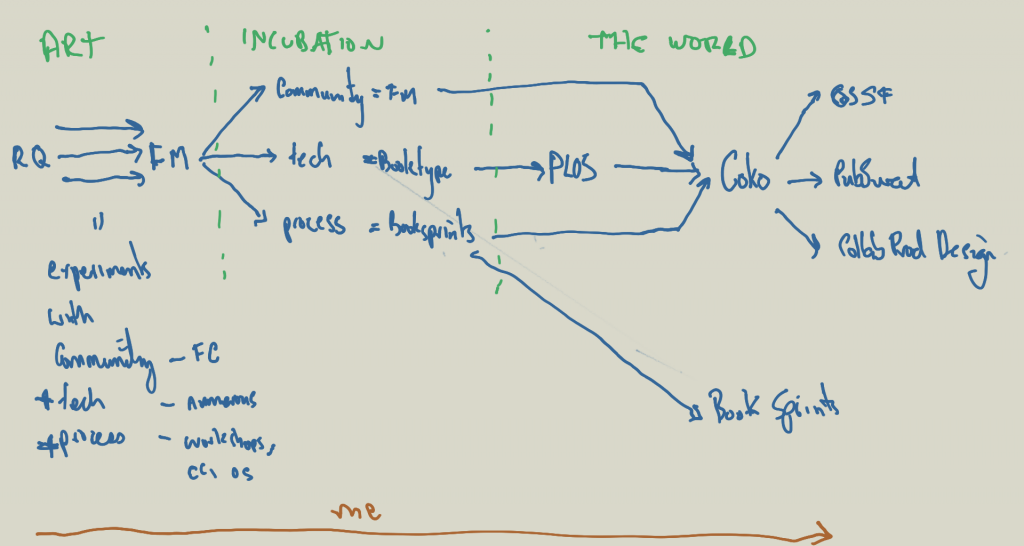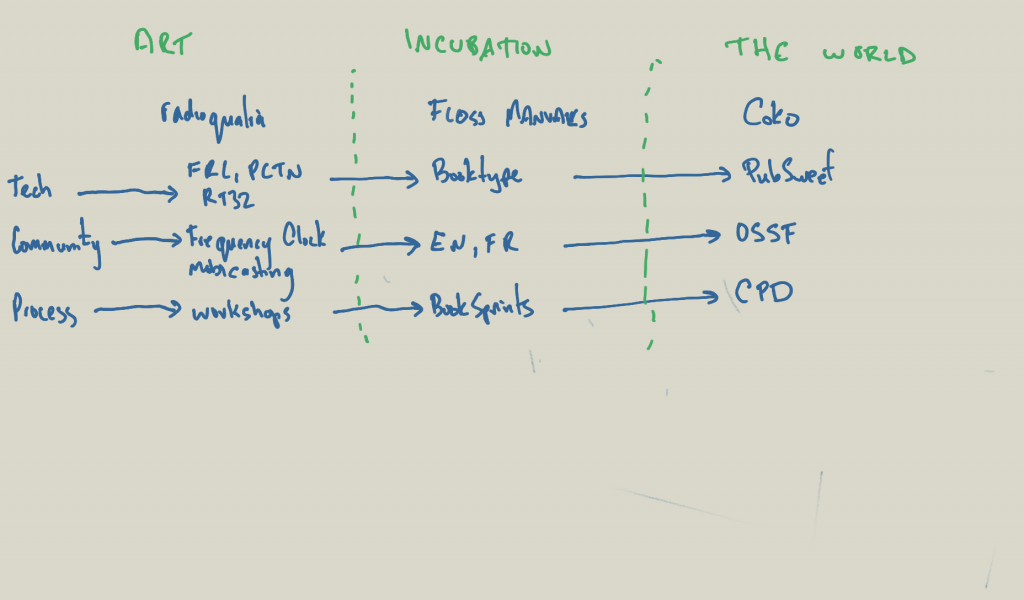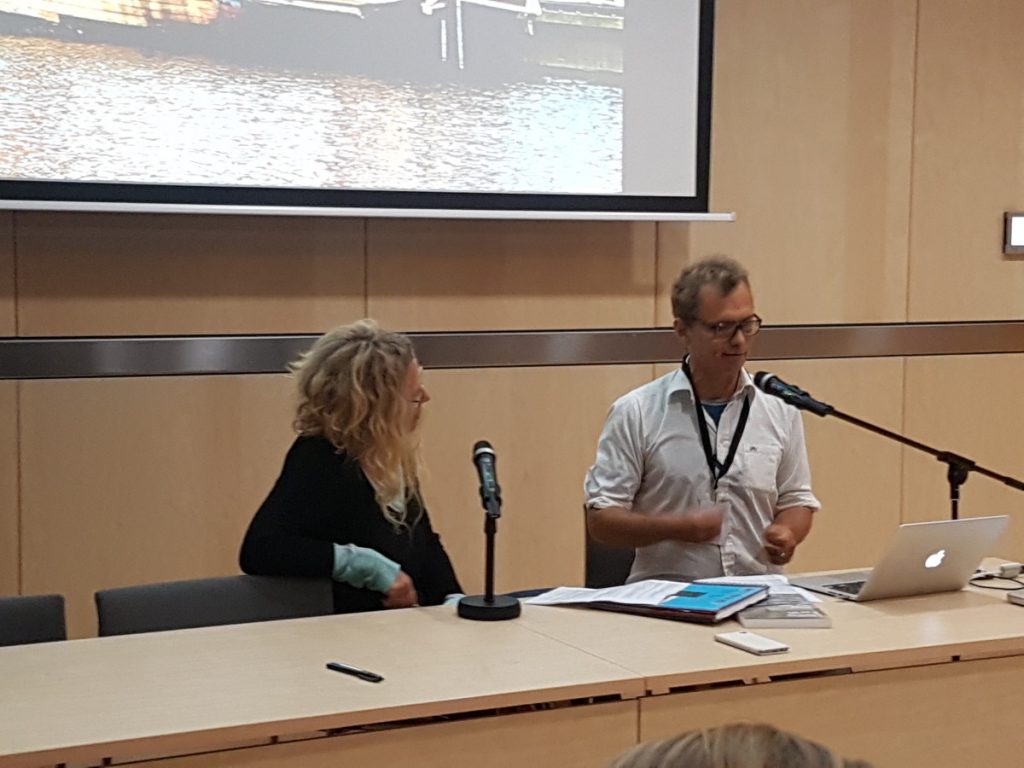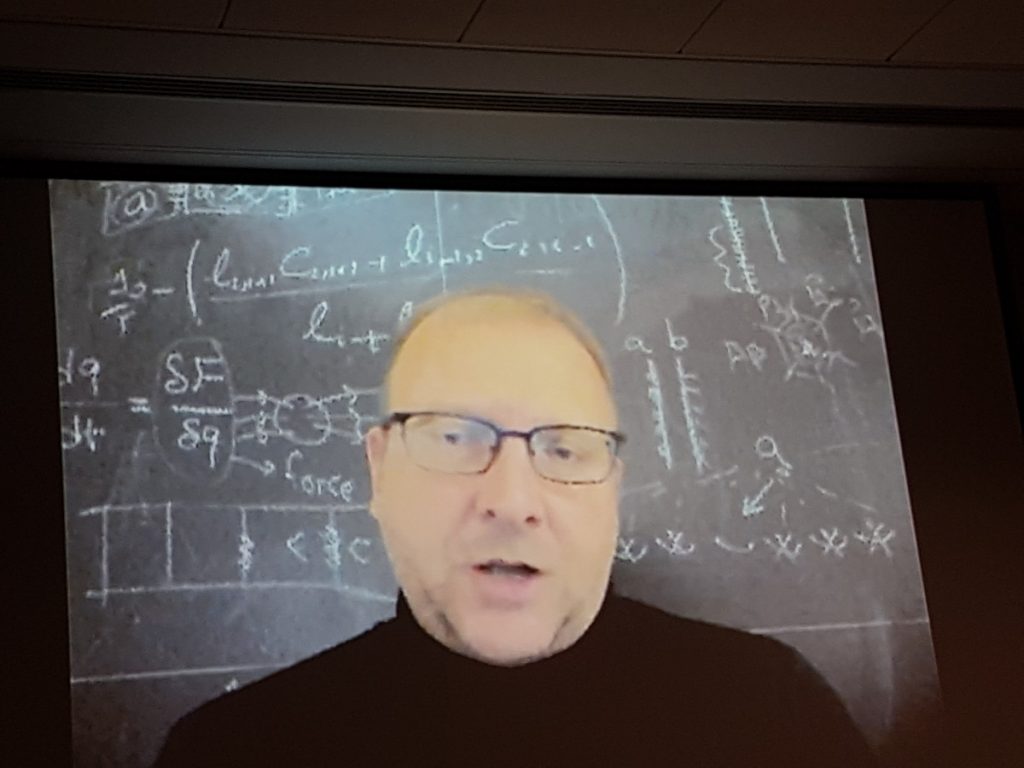I recently did a presentation at the Open Fields conference in Latvia. It was about how art shaped how I think about publishing. It was a very personal pondering. I’m not sure how interesting it was to the audience but it gave me some moments to contemplate this for myself and, as a result, I produced these two mappings. The first shows my journey from art to publishing:

The next is the same journey but with the themes of Tech, Community, and Process threading through the mix.

I was trying to articulate how I am still the same person now, working in publishing, as I was when I was an artist. I think what I do hasn’t changed (it has, a little, utility has its own laws after all, but for the most part is the same) but the operational context has changed. I live (literally) in/on the publishing world, whereas previously it was the art world. In between was an interesting half-way house for my artist self – FLOSS Manuals which I founded when I ‘gave up’ the art world after I came back from Antarctica. This half-way house gave me the skills to transition from the art world to the ‘real’ world. In that period I developed the basics of the Book Sprint method, learned how to build community, and started building publishing tools.
Interestingly I never thought I was ‘entering the real-world’ (my apologies for the use of the term ‘real-world,’ it’s not to imply an invalidation of the art world, but it feels like a better term than ‘non-art world’ or any other term I tried to use instead). When I started FLOSS Manuals I thought I was doing what I did as an artist – making the interestingly ridiculous possible. I sought to establish the largest community in the world producing free manuals about free software. It didn’t have much reality attached to it and I never really thought through the sustainability options for this path. I just did it and trusted I’d work it out (a skill artists need all the time). So FLOSS Manuals is, in retrospect, a handy transitional moment and very important to all I do now, but at the time I just did it purely as a challenge and I didn’t want to get “a real job.” 😉
It’s important to me to drill down into this a little because I think art, like philosophy, enables you to choose ways of thinking. I think I’m still an artist, and its important to me to identify as that. I don’t go around saying “I’m an artist,” because the world reads artist with a capital A. Artist. Most would laugh if I said I was an Artist because in this world that sounds self-aggrandising. “Oh. he thinks he’s an artist of systems design”… sounds a little ridiculous. Like I’m claiming the mantle of Steve Jobs. But.. .a good friend of mine (Jaromil) once invited me to join an Italian hacker collective (dyne.org). I was flattered but I said I wasn’t a hacker (or Italian) and his reply was ‘hacking is an attitude’ (I think being Italian might be an attitude too. 😉 I appreciated that and I think the same is true for artists. It’s a way of thinking, an approach. For me, it means being critical of what you do and not listening to the legacy ways. Of dreaming and allowing ideas to bubble through from of a cacophony of interesting ponders and hooks. Of allowing you to invest in the ridiculous as part of the journey to the succinct. At least that’s some of it.
Open Fields was an interesting event, perhaps more from a personal point of view too as this community was once my world (the art world). It was great to see some old buddies… particularly Tim and Tina from TimesUp. Still doing great work: And of course…Marko Peljhan…never there even when he is there. haha 🙂
And of course…Marko Peljhan…never there even when he is there. haha 🙂

